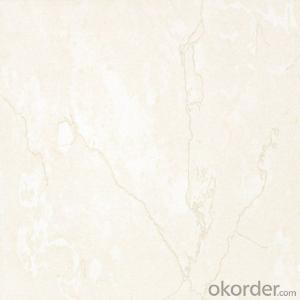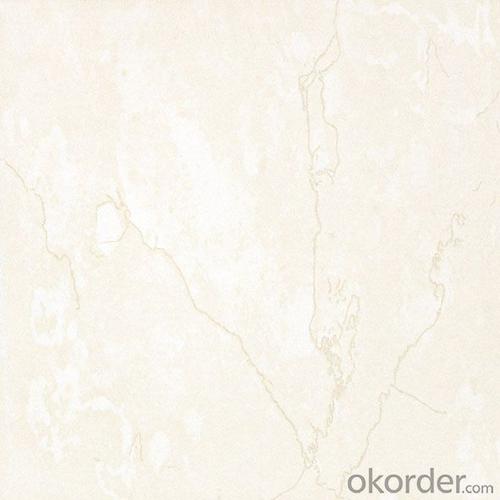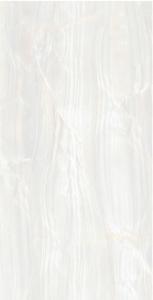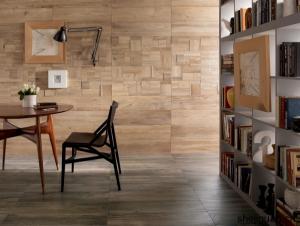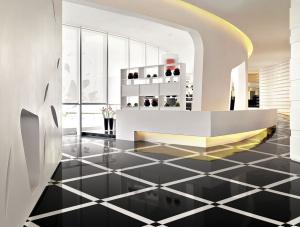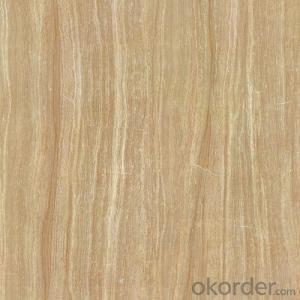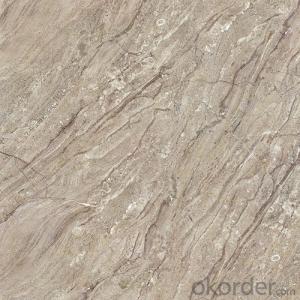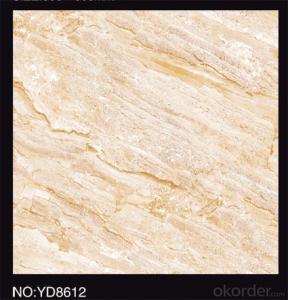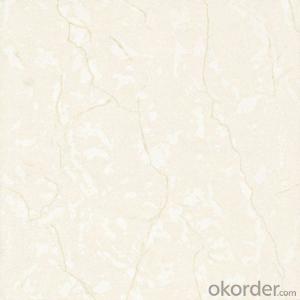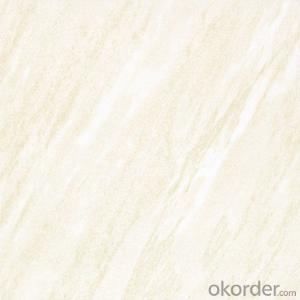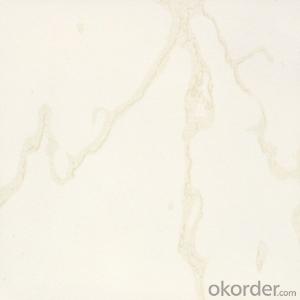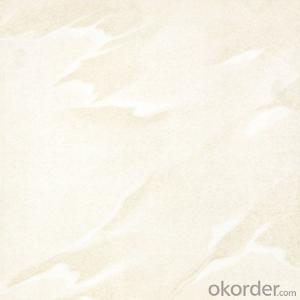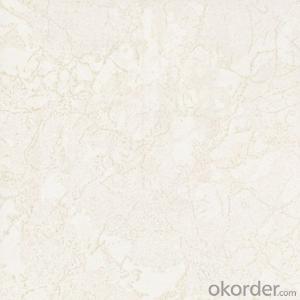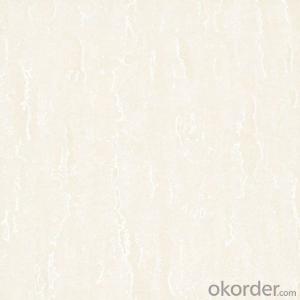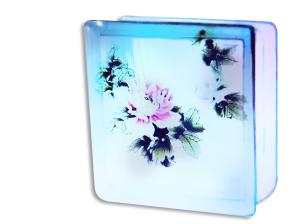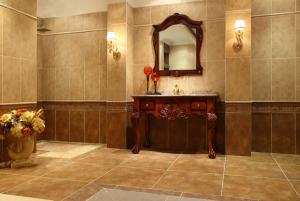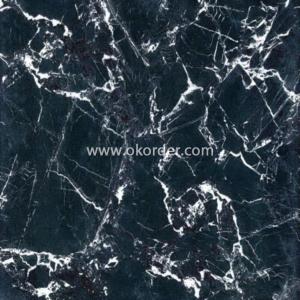Polished Porcelain Tile Soluble Salt SA001/002/003
- Loading Port:
- China main port
- Payment Terms:
- TT OR LC
- Min Order Qty:
- 1267.2
- Supply Capability:
- 100000 m²/month
OKorder Service Pledge
OKorder Financial Service
You Might Also Like
Product Brief Introduction
Polished Porcelain Tile Soluble Salt SA001/002/003 is one of the most popular color of Soluble Salt Serie, which is one serie of Polished Porcelain Tile in the present market. Just like other series, it could be used for interior floor for apartment, villa, super market as well as other public areas, due to its being high glossy and clean, homogeneous color shade as well as the reasonable price compared with natural stones.
Product Features
Polished Porcelain Tile,
Only Grade AAA available
Strict control on color shade, deformation, anti-pollution, surface glossy degree as well as packing
Competitive price
Standard export packing: Pater Carton+ Wooden Pallet
Fast delivery
OEM service could be offered
Marketing support on samples, catalogues as well as carton designing
Professional sales team for product, document and schedule of importing and exporting.
Product Specification
Tile Type: Polished Porcelain Tile
Quality standard: GB/T4100-2006, ISO13006, ISO9001
Water Absorption Rate: 《0.5%
Breaking Strength: 》 1800 N
Rupture Modulus: 》40 MPa
Length and Width Tolerance: ±0.1%
Surface Smoothness: ±0.15%
Edge Straightness: ±0.15%
Wearing Strength: 《1600 mm3
Packing Information (For 27.5 Tons heavy 20’Fcl)
For 600x600mm, 4pcs/Ctn, 40 Ctns/Pallet, 960 Ctns/20’Fcl, 1382.4m2/20’Fcl
Production Line & Package
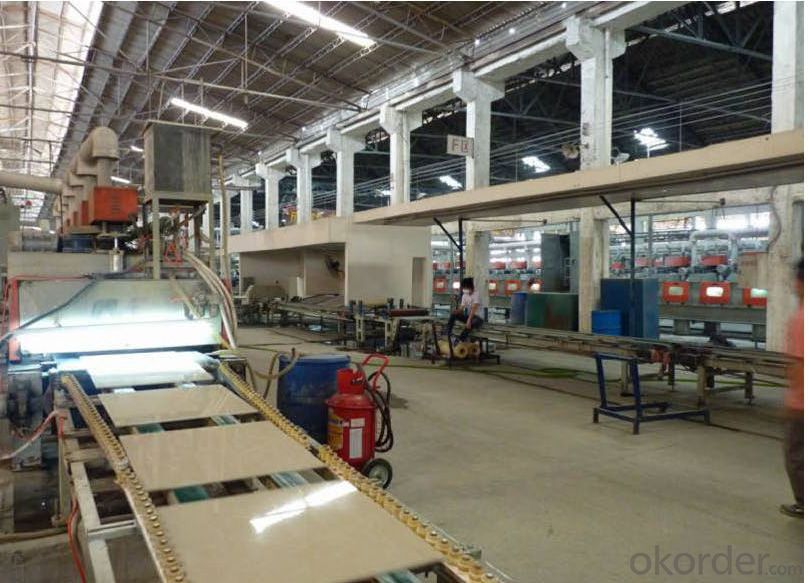
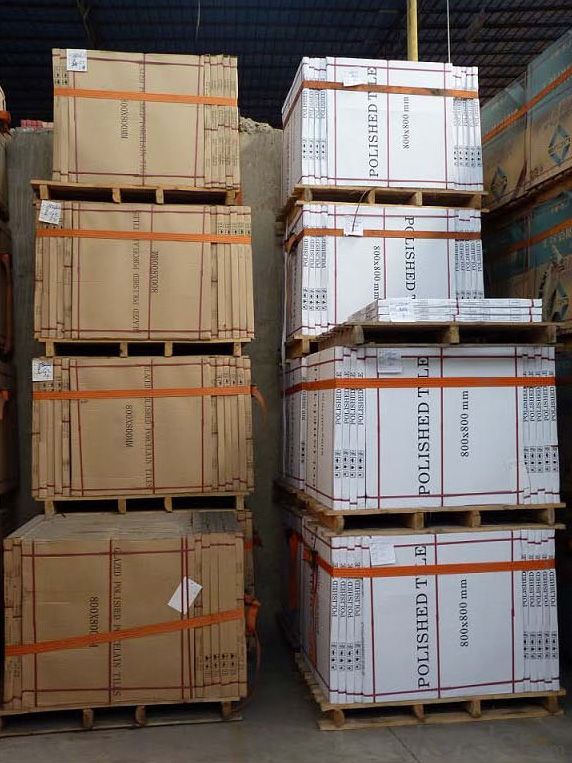
FAQ
1. For Polished Porcelain Tile, is the 30*60 available?
—— Yes, 30*60 is available. Due to the basic size is 60*60, we need to cut 60*60 tile into 30*60. 6 pcs are packed into one carton.
2. What is the MOQ for this tile?
—— Normally the MOQ is 1382.4 m2 for one 20’ container. To support our clients, we could go with 3 models to fill one container at most.
3. Can we use the carton with our own design and brand name?
—— Yes. Normally we go with Neutral Carton or our Carton with our CMAX brand name. But for carton of client’s own design, the MOQ for one size is 5 containers, due to the carton factory can’t arrange production if quantity is below 5000 pcs.
Trade Terms:
• Payment: T/T 50% in advance, balance against copy of T/T,Weston Union, L/C etc.(Payment can be negotiale, kindly to
contact us)
• Production Lead Time: 15- 20 after deposit paid.
• Shipping Methods: by sea, samples can be sent by express.
• FOB Shipping Port: Foshan, Heshan
• If you want to deal with EXW/CIF/CNF term instead of FOB, please specify. Otherwise, FOB price will be quoted under
inquiry.
Our Service:
• Your inquiry related to our product & price will be replied within 24hours.
• Well-trained & experienced staff are to answer all your inquiries professional in English.
• Working time: 24 hours on line
• OEM is highly welcomed.
• Your business relationship with us will be confidential to any third party.
• Good after-sale service offered, please get back if you got question.
Suggestion:
Please kindly check the packages after you receive the goods, if you got wrong products/ quality problem/ short q'ty, please
get back to us as priority. Please note that you need to send us pictures of the defective items concerning this, and we will
consider to replace or refund accordingly.
- Q: I know granite is one, but what other less expensive kinds of tile are durable enough for countertops? Just bought the house so money is tight and granite,or even granite tile, is out of the question.
- If your budget is too tight to allow for a granite slab or tiles, you might have to go with ceramic tiles for now, and perhaps just get a slab of marble for part of the counter if you do a lot of pastry baking. (Marble stays nice and cool, to help keep the butter from melting out of your pie crust or puff pastry while you work it.) The cost of a granite slab may be no more than it would be for tiles, once you account for a tilesetter's labour to install the tiles properly. You might also consult with the kitchen design folks at Lowe's or Home Depot. They may have other suggestions not given here.
- Q: I am looking at removing the existing wooden fire place surround (not a mantel, but some decorative wood surrounding the fireplace), and the 70‘s fireplace hearth, and replacing each with some nice slate tiles. The slate would be attached to the wall, and to the floor. Is there anything I should know when attaching (slate) tiles to a wall? Do I need to remove any paint, or can I get an adhesive that will bond (PL Premium or regular mortar mix?). How close should the grout lines be with slate? I know with marble you want them close, and with ceramic you can have some space. How do you ensure the tiles don‘t slip when attached to a vertical wall. Sorry for the questions, but I do appreciate any suggestions and answers!
- Only loose paint needs to be removed. If your paint has no chips or bubbles there's no reason to try taking it off. Your grout lines can be from 1/8 to 1/4' depending on your preference. Use a premixed ceramic wall adhesive such as Pro-Lastic, Pro-Flex, or Pro-Mastic Thinset. To keep tiles from slipping, simply start at the floor and work up, applying spacers between the tiles as you work. The adhesive will keep the tiles from falling off the wall, and the spacers and tiles below will keep them from sliding down. Some tiles come with built in plastic spacers for wall installation. It is possible for the tiles to sag a little so check with a level from time to time.
- Q: Trying to select floor tile to match kitchen and rest of downstairs living area (dining, living, family rooms). I have a lot of natural light in all areas. I have light oak kitchen cabinets. I just installed granite counter tops named Golden Desire but I have yet to install tile back splash. What color tile would I choose for the kitchen and throughout the living area. Thanks
- Golden Desire tile back splash or close. kitchen light Tile . throughout the living area some thing that blends but not off the wall to the kitchen floor.
- Q: I am planning on laying down tile in my dining room and kitchen. I recently saw an offset pattern with 12x12 tiles and liked it. I‘ve now decided to go with the same offset pattern but with 20x20 ceramic tiles. Would I still have to find the center of the room and start tiling out from the center or can I just start at one wall and go from there since i‘ll be using the offset pattern? Thanks in advance.
- Starting at the center is the only way, regardless if the tile is in line or offset as you plan. Especially with the 20x20. it would look odd to have a 2 tile on one side and an 18 tile on the other. Remember, there is a vertical plain as well as a horizontal plain. Your pattern, with two rows and spacers should be layed out wall to wall up down as well as right and left. That is an easy way to determine your first and second tiles. Mark those two tiles with a magic marker. A rough starting point is determined by measuring the length of the room, convert to inches then divide by 20. This gives you the number of tiles aprox.,divide this number by two (2) and set the first tile at aprox 1/2 the distance from the wall
- Q: I will be making a 36 x 36 hearthboard for my gas fireplace stove out of slate tile. Do I need to space them and use grout in between or can I just cement them down next to each other like you would glue down vinyl tiles?
- With a gas stove, Code just requires you don't set it on something combustible. With joints of any kind it is considered combustable since heat can travel through the grout/mortar but wont travel through the tile, so if your going to make it your self, the easiest way is to buy a piece of Cement board from HomeDepot, and glue all your tiles down with Power Grab caulk then fill the joints with grout, other wise it is not code. Just sticking them to the floor does not qualify and if anything ever happens your liable for it, insurance wont cover it. This kind of board won't work for wood though, it would have to be heavier duty. Make sure you make it big enough to meet the clearance to combustibles listed on the back of the stove as well
- Q: I am making a unglazed ceramic tile-mosaic table and I know I have to seal the tiles as well as grout and then seal the grout. Can I use a tile-sealer as a grout sealer? Or do I have two use two different products?
- Sealers for ceramic or porcelain are useless. These materials are non porous. The best advice I can give you is to use a dark color grout. What the guy above said is right.
- Q: What is the probability that the two faulty tiles share an edge?
- Break down the titles into 3 categories: - Corner tiles (there are 4) - Outer tiles that aren't corner tiles (there are 6*4=24) - The rest, on the inside (there are 6*6 = 36) If a tile is on a corner, there are only 2 possible other squares in the grid that it can share an edge with. If the tile is in the second category, there are 3. And if the tile is somewhere in the middle, there are 4 neighboring tiles it could share an edge with. The total probability that two random tiles share an edge is: ( P(tile is a corner tile)*(2/63) + P(tile is on end)*(3/63) + P(tile is in middle)*(4/63) ) / 2. We have to divide by 2 because we're counting each pair twice. So this is: ((4/64)(2/63) + (24/64)(3/63) + (36/64)(4/63)) / 2 = (8 + 72 + 144) / 2(64*63) = 112/4032 = 0.027777... EDIT: Right after I first posted this I noticed that the user above me got the same answer unsing a different method. I like his method better, but it would seem to be that the total number of unique pairs on the grid is not 64*63, but 64*63/2 because there are two different ways you can pick tiles to make the same pair (depends on which order you pick them in). So maybe the answer is 112 / 2016 and I missed something in my reasoning!
- Q: Including the ground and the wall, need to pay attention to what aspects of the problem? Decoration has no experience, hope to say the details, thank you
- 1. Whether the tile is complete, whether the corner burst. 2. Faucet, switch box, floor drain, sewer and other places where there is no crack brick 3. There is no black spot or stain on the surface of the tile 4. Tiles and tiles seams, hand touch can not have a particularly high and low feeling 5. Tapping the tiles to see if there is no empty valley (especially the bathroom wall, the best every one to knock) 6. Level on the tile, see is not vertical, horizontal. 7. There are tiles in the tiles are used to see whether the missing parts 8. Whether the same tile is straight, tile size.
- Q: should I clean the tiles in my basement or is there not worry about it? Thanks
- Leave them alone. The best you could do with ceiling tiles in any case would be to vacuum them; ceiling tiles don't like moisture so you can't attack them with any kind of wet cleaning agents and expect to get away with undamaged tiles. Look around and see how often you see anyone ever treating ceilings. Bacterial threat from ceilings is effectively zero: the only things that ever get there have to be airborne in which case the ceiling is the least of your worries, and you don't ever touch them anyway. Anything that lands on and sticks to the tiles will dry out very shortly, it's a ridiculously inhospitable environment for life, bacterial or otherwise.
- Q: standard terracotta tiles
- I'm not certain what the dimensions of a 'standard terracotta' tile that you mention are but... we have a Spanish style roof, utilizing what is called Spanish Mission Tile, in which the tiles are semicircular in cross section and about 6 inches wide, by about 20 inches long. It is the type of tile that requires one column of tile INVERTED with the concave face upward, and the next column [on both sides] with the concave side down covering the edges of the adjacent up-curved tiles. The Mission tiles are NOT the kind in which one tile provides both the under' and over'' portion in a single tile. Our Mission tiles weigh 5 pounds each and we have 3,500 on our roof which totals out to roughly 17,500 pounds on a house of about 2,000 sqft. We [My father, Mother, myself (12 yoa), and my brother (8 yoa)] installed this roof ourselves back in 1954 and although it wasn't complicated, it was a whole lot of hard work. It took us almost an entire summer to do it. You may be able to get more info from the manufacturer from who we buy replacement tiles. It is the D'hannis [Sp?] tile company located at Hondo, Texas, which is west of San Antonio.
Send your message to us
Polished Porcelain Tile Soluble Salt SA001/002/003
- Loading Port:
- China main port
- Payment Terms:
- TT OR LC
- Min Order Qty:
- 1267.2
- Supply Capability:
- 100000 m²/month
OKorder Service Pledge
OKorder Financial Service
Similar products
Hot products
Hot Searches
